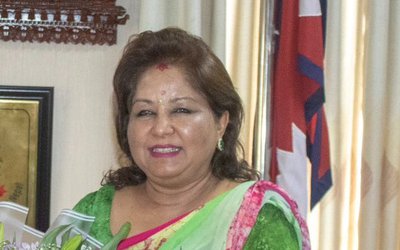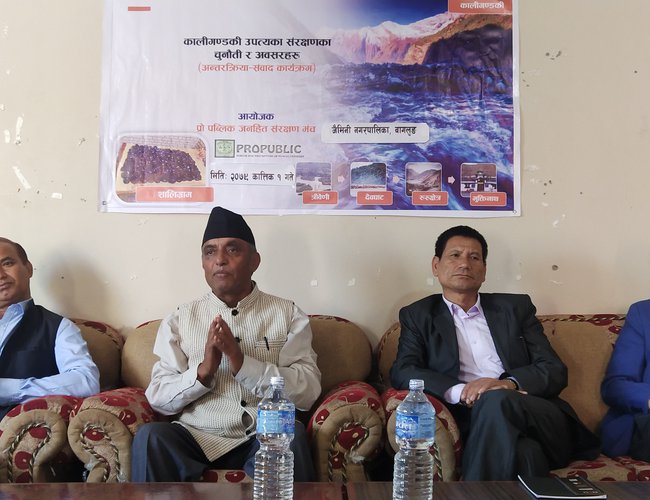
Sixty-eight years old Subramanian and his four family members, residents of Chennai, Tamilnadu State of India, recently paid a one-day pilgrimage tour to Mukti-Chhetra in a charter helicopter from Bokhara.
Paying Rs.300, 000 to charter a helicopter, Subramanian believed that he found Mokchhya (salvation) after his visit to Muti-Chhetra and worshiping lord Vishnu.

Discussions at Rampur, Palpa
“This is my lifetime wish to visit the Mukti Chhetra and bow down before Muktidata,” told Subramanian to New Spotlight at Mukti Chhetra. “Although I have taken all essential medical precautions, I have not faced any health difficulties and complications in over 13000 feet height. Despite being overweight and from low land, Muktinath blessed me to complete visit.”
Ram Krishna Aiyer, 48, a resident of Bangalore, the Indian state of Karnataka, visited the shrine in a chartered helicopter as well. Ayer, a software engineer with his own outsourcing company, was wishing to travel to the place for years and found this October as the most appropriate time. “I feel like I am in heaven. I am relaxed and in a peaceful mind,” said Ayer, who chanted Vishnusharsha Nam (the thousand name of the god Vishnu) at the temple.
Subramanian and Ayer were not the only two Indian tourists to visit Mukti-Chhetra, hundreds of religious tourists from South India including Tamil Nadu, Karnataka, Kerala and Andhra Pradesh have been visiting Mukti Chetra by chartered helicopter, regular flights and cars every month after the end of Monsoon session.
Being a place with high religious and cultural importance for over one billion Hindus around the world, Kali Gandaki River, which connects Nepal’s Mukti-Chhetra to India’s Harihar Chhetra, has huge tourism potential.
Showing this important aspect of Kali Gandaki River, senior advocate Sharma recently hold a series of interactions with various stakeholders including the mayor, Chairman and members of Municipalities, religious and spiritual gurus and the local community living on the river bank of Kali Gandaki River.
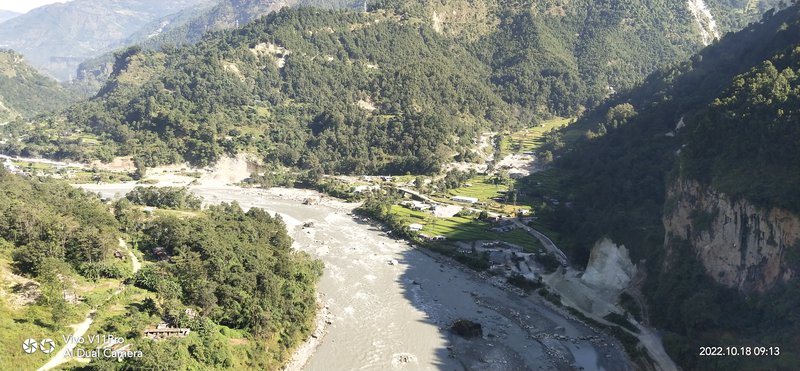
Kali Gandaki River
As he floated the tourism potential of linking Mukti Chhetra to Harihar Chhetra five years ago while visiting Harihar Chhetra in India, Nepal’s political leadership announced to dam the river to divert the water to Tinau.
Political leaders showed the sweet dream of water diversion schemes and dams without analyzing the huge environmental, religious and ecological costs. As the construction of big dams involves hefty commission and corruption, promoting religious tourism, which benefits local people and the environment, seems to rarely appear on the radar of political leaders.
Unaware of the high tourism potential, local political leaders and the local community rarely take this agenda. Although building suspension bridges, bunjy jumps and other such adventure tourist attractions above Kali Gandaki River, tourism entrepreneurs have already started to lure domestic tourists.
Given the near completion of construction of the Kali Gandaki corridor, the idea floated by senior advocate Sharma promoting tourism as an attractive option is more relevant and viable to improve the livelihood of people.
Situated several important religious shrines mediation spots of Rishis (sages) like Byas, Bashistha, the guru of Rama and Jaitin, son of Byas, Balmiki and place described in Ramayana and Mahabharata period, Kali Gandaki, which is also only sources of Saligram in the world, is now struggling to save its identity from burgeoning major development activities including construction of hydropower, dams and stone queries and sand extractions. The proposed storage hydropower project and river diversion dam will completely ruin all options.
Pro-Public For Protection
With all potential to declare World Heritage Site, senior advocate Sharma and his team of Pro-Public have been fighting a long court battle to preserve the river and its identity.
“Don’t disturb the flow of Kali Gandaki River which is attached to the sentiment of Hindus. After listening to us, the Supreme Court stopped the construction of the diversion dam. However, we have to still to fight a long battle to make this river free. To make the river a river of Global attention, we are also demanding to declare the river as a world heritage site,” said senior advocate Sharma. “Once the river declares as a world heritage site, the visiting tourists will increase multi-fold providing alternative resources to the local levels and people.”
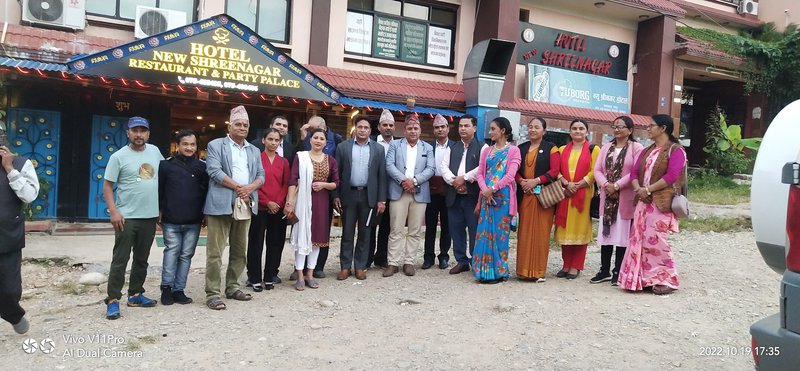
With Sake holders in Rampur
Senior advocate Sharma argues that Kali Gandaki is the only river to have Shaligram, a sacred fossil stone greatly attached to Hindus and the Hindu religion. Knowing this importance, Indian Prime Minister Narendra Damodar Modi, whose middle name comes from Damodar Kunda, the source of Kali Gandaki, visited the shrine. His visit has rejuvenated Mukti Chhetra increasing the number of Indian spiritual tourists a hundred times.
“Number of tourists visiting from India has drastically increased recently. After the visit of Indian Prime Minister Narendra Modi, there has been a rush of Indian tourists,” said Krishna Subedi, Hindu Priest of Mukti Nath Temple. “As is written in Purana and other Hindu sculptures, visiting Mukti Chhetra gives salvation to the individual. “Hindus from South India regard, this as a highly religious place for them.”
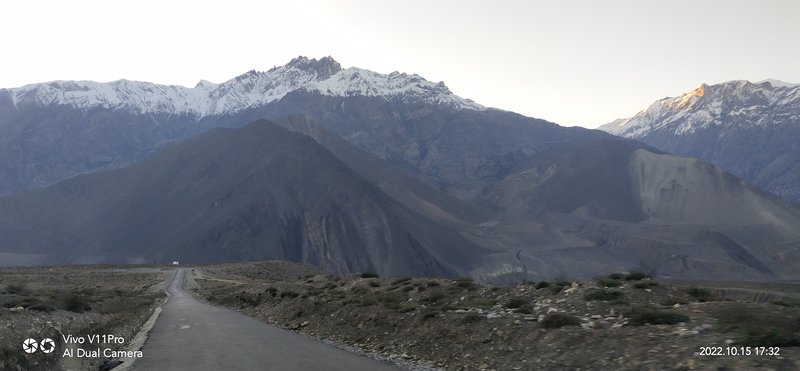
Kali Gandaki Corridor
Even in its interim order, a single bench of Chief Justice Cholendra Shumsher JB Rana ruled that the natural flow of the Kaligandaki River should not be diverted until a final verdict on the sub-judice case is passed.
“Considering the religious, historical and environmental significance of Kaligandaki River, an interim order has been issued to halt all works relating to diversion of the flow of the river, construction of the reservoir, extraction of Saligrams, and any work that pollutes or exploits the river until the final decision,” read the interim order issued on July 13 according to Rule 49 (2) of Supreme Court Rules, 2017.
Ignored For Decades
Although Kali Gandaki river and its basin from Damodar Kunda (Sources of the river) up to Harihar Chhetra (Bihar India), all the places are holy for Hindus and Buddhists. It is believed that taking a dip in any part of Kali Gandaki and Gandak rivers washed the sins and purify humans. However, the river and the temple have remained remote and confined to a limited number of people.
Many highly important Vishnu sculptures in Southern India were built carrying Shaligram from Mukti Chhetra hundreds of years ago but only limited numbers of people visited the site till the place was connected by road.
“After PM Modi’s visit followed by the expansion and improvement of road, the number of Indian religious tourists has increased almost 300 times,” said Hindu Priest Subedi, who has been performing all Hindu Puja in Muktinath for the last two and half decades with Buddhist nun (Jhuma), who control the temple as the shrine of Padmasambhaba.
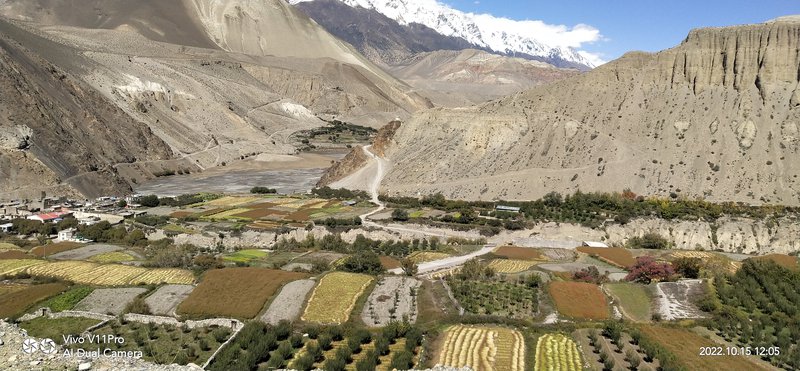
Kagbeni
Along with Hindus, it is also important to place for Tibetan Buddhists. For Tibetan Buddhists, Muktinath- Chumig Gyatsa is a place of Dakinis, goddesses known as Sky Dancers. It is of great importance for Buddhists that Chumig Gyatsa is one of the 24 Tantric places.
The Tibetan Buddhist tradition states that for this reason, Guru Rinpoche, also known as Padmasambhava, the founder of Tibetan Buddhism meditated at Muktinath on his way to Tibet. It is one of the 51 Shakti peetams for them.
The particular site in the course of the river where the stones become sacred is known as Chakra-Tirtha. The sanctity of this site is said to extend to 24 miles all around. There is a tributary called Chakra-Nadi or Jhong Khola that flows from Muktinath and joins the Kali Gandaki at Kagbeni.
Dam Vs Faith
At a time when the Mukti Chhetra and Kali Gandaki River is getting international attention, any interventions through the construction of dams in the river will have drastic impacts, not only on the river's ecology but also for the promotion of tourism.
“We can lure tens of thousands of religious tourists from all over the world. Along with Muktinath, there are other important religious places like Kagbeni, a place where a crow is believed to have dropped Beni during the Ramayan period and a story related to Jadbharat and his salvation in Galeshwor,” said Rishi Prapannacharya, chairman of Shreedharacharya Shalgramalaya, a museum of a collection of over 200000 Shaligram. “Many important places related to the period of Ramayana and Byas Rishi lie along the Kaligandaki
“Instead of exploiting rivers, and tributaries for resources, declaring the entire Kaligandaki religious tourism hub bring prosperity to the entire region. For this, we also need to work to declare Kaligandaki as a World Heritage site,” said senior advocate Sharma who filed a petition in the court demanding to stop the construction of the Kaligandaki-Tinau diversion dam and declare it as a heritage site. “Kali Gandaki River should leave untouched without any hydropower, dams, or excavation for stone and sand,” said senior advocate Sharma. “All municipalities along the river sides should not discharge open sewerage and dispose of the garbage.”
Expert holds the view that the river has a high potential for tourism. Adventure tourism like rafting seems to be very attractive in Kali Gandaki river.
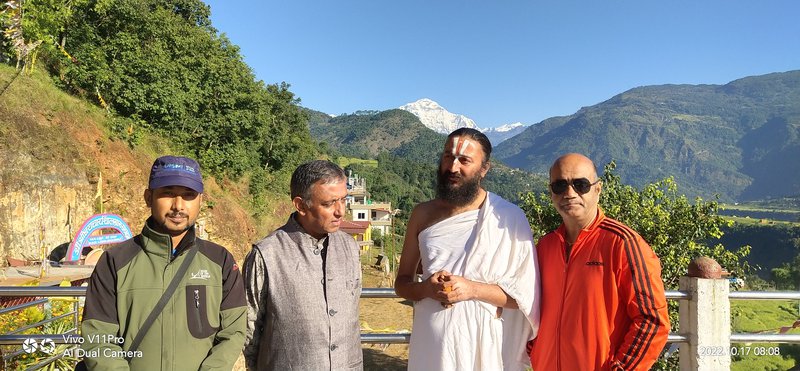
Sharma (Center) with Guru
“None of the places in the world to have such a religious importance for the Hindus than Mukti Chhetra and Kali Gandaki River,” said Professor Dr. Kul Raj Chalise, member of a committee formed by Gandaki Provincial Government to study the religious, ecological and cultural importance of Kali Gandaki River. “Gandaki Provincial Government formed the committee following the interim order issued by the court to explore all aspects of the river. “Since hundreds of religious sites along the river bank, promoting religious tourism can be a boon for the people living in the area,” said Dr. Chalise.
Other expert backs Professor Dr. Chalise’s argument. “Religious tourism is one of the main sources of income for the people in the famous religious spots like Baglung Kalika, Jaimuni, Rede religious site, Kagbeni, Muktinath Temple, Galeshwor temple, etc. Potato, apple, phapad, beans and yak milk products from high altitudes especially from Marpha, Jomsom, Kagbeni, and Upper mustang are in high demand in major cities in the countries,” writes Hemant Dhakal, an ecologist from Prithivi Naryan Campus.
Gurus And Political Leaders Favor Tourism
At a time when river exploitations continue to affect the quality and volume of water, its cleanness and purity, religious Gurus favor promoting tourism as a better option to contain all kinds of environmental damage.
Rishi Prapannacharya, Chairman of Shree Shreedharacharya Shalgramalayam, is curetting a museum with collections of around 200,000 different sizes of Shaligram Shila in Kundle, of Baglung district.
He holds the view that Kaligandaki has a high potential for religious tourism which is untapped. Kali Gandaki is among the highly significant rivers.
Not only the religious Gurus from head to the middle of the river, Gurus in Debghat, the tale of the river also backed religious tourism as an alternative to the construction of destructive dams and diversion schemes.
Swami Atmananda Giri, head of Galeshwor Asharam, Debghat, holds the view that there is no need to build any diversion dam to reduce the flow of water in order to improve the livelihood of people. “If protection of nature can save the sanctity of river and offer economic opportunity through promoting tourism, why do there need to build diversion dams and tunnels,” said Swami Giri.
“Court also needs to direct the government to take the necessary step to declare Kali Gandaki a World Heritage site. This will be a win-win solution for all.” “Dam constructions and obstruction of rive are unacceptable for us. We cannot do anything but be ready to sacrifice our life in protest against any such construction.”
Political Leader For Tourism Promotion
Not only spiritual Gurus, local elected leaders also hold the view that promoting tourism is the best option to generate resources from the river and uplift the lives of people leaving without harming the river.
Amar Bahadur Thapa, Chairman of the District Coordination Committee Baglung, holds the view that people living in the regions oppose disturbing the flow of rivers and inundating fertile land for storage and diversion dam. “Obstructions in the river mean the inundation of our shrines, temples and land. This is unacceptable to us. Promoting religious tourism does not harm nature and provide benefit for the people. We are ready to support it. We hope Supreme Court in its final verdict also directs the government to look at these options.
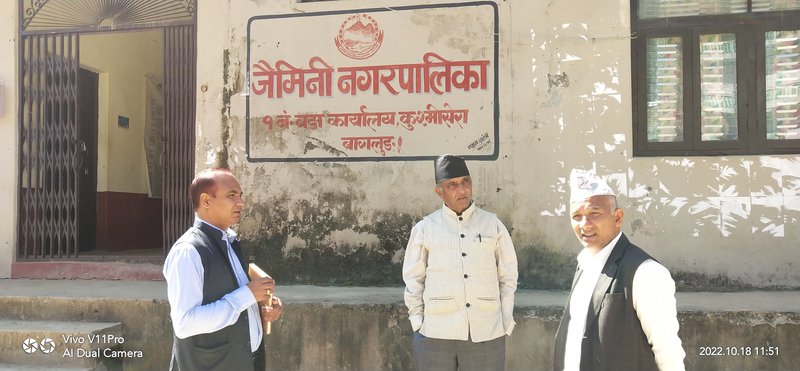
If any dam is constructed for the storage project in Kali Gandaki, the Jaimin Municipality of Baglung district will face a huge loss of its religious sites and fertile land. “High dam for storage project will destroy our religious sites and fertile land, we will oppose dam construction. We welcome any step taken for the promotion of tourism as a good step,” said the mayor of Jaitin Municipality Nara Bahadur Pun. “Since the ball is now in Supreme Court, we hope the court will direct the federal government to promote tourism in the region.”
In a wider stakeholder meeting in Rampur Municipality of Palpa Districts, political leaders, community leaders and other stakeholders expressed the hope that the federal government will come out with a tourism promotion package to boost the economy of the municipalities and rural municipalities of Gulmi and Palpa of Lumbini province and Myagadi, Parbat, Syanja, Tanahu and Nawalparasi East of Gandaki Province.
“We have beautiful rivers, valleys, settlements and religious sites along the Kaligandaki Road corridor, Most importantly, the road has already connected several districts along the Kaligandaki river from Nawalparasi east to Mustang district. If the federal government and provincial government come out with a special package for tourism promotion, it can benefit a lot,” said Raman Bahadur Thapa, mayor of Rampur Municipality. “The municipality board has already approved the budget to promote the homestay in the areas.”
Chairman of Baudikali Rural Municipality of Nawalparasi east Prakash Ojha said that his rural municipality has many important religious sites. “The shrine Baudikali is a highly important Kali temple of the region. We have allocated a budget to make the temple attractive for the visitors there,” said chairman Ojha.
Shaligram And Importance
At a time when the demand for Shaligram is high among Hindus all over the world, people in the region can generate huge money by selling it. Except in the Kaligandaki river, no river has a Shaligrama Shila which is a particular variety of stone collected from riverbeds or banks of the Kali Gandaki, a tributary of the Gandaki River in Nepal. The stone is used as a non-anthropomorphic representation of God Vishnu by Hindus.
According to scientists, they are typically fossils of ammonite shells from the Devonian-Cretaceous period of 400 to 66 million years ago. The fossils are considered holy by Hindus because Madhavacharya received it from Vyasadeva, also called Astamurti, and also they resemble symbols associated with God Vishnu, mainly the Shankha (conch shell).
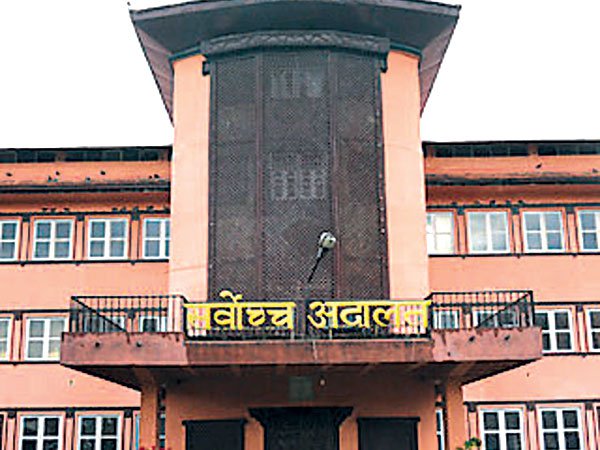
Supreme Court
According to Puran, any of a class of Sanskrit sacred writings on Hindu mythology and folklore of varying date and origin, the most ancient of which dates from the 4th century AD, the Shaligrama shila originated due to Vishnu (left) being cursed by Tulasi, an incarnation of his wife, Lakshmi (right), to transform into a stone
According to the Devi Bhagavata Purana, Brahmavaivarta Purana, and Shiva Purana, shilagrama sheilasShila originated due to the following chain of events.
Historically, the use of Shaligrama shilas in worship can be traced to the time of Adi Shankara through the latter's works. He suggests that the use of Shaligrama shila in the worship of Vishnu has been a well-known Hindu practice.
The statue of Vishnu in the Padmanabhaswamy Temple of Thiruvananthapuram and Badrinath Temple of Garhwal region and that of Krishna in Krishna Matha of Udupi and Radha Raman Temple of Vrindavana are also believed to be made from Shaligrama shilas.
Shaligrama shilas are obtained from the area of Nepal known as Shalagrama chhetra, which lies on the basin of the Kaligandaki river between Damodara Kunda situated south of the mountain peak Damodara Himal near Dhaulagiri in Mustang district in the north to Ruru Chhetra referred to as the hermitage of Sage Pulaha in Varaha Purana in the south.
Gandaki’s Catchment Areas
The Gandaki River, also known as the Narayani and the Gandak, is one of the major rivers in Nepal and a left-bank tributary of the Ganges in India.
Its total catchment area amounts to 46,300 km2 (17,900 sq mi), most of it in Nepal. The Nepal Himalayas is notable for their deep canyon. The basin also contains three mountains over 8,000 m (26,000 ft), namely Dhaulagiri, Manaslu and Annapurna I. Dhaulagiri is the highest point of the Gandaki basin.
However, the Kali Gandaki river source is at the border with Tibet at an elevation of 6,268 meters (20,564 ft) at the Nhubine Himal Glacier in the Mustang region of Nepal.
Religious And Spiritual Sites
From the source of the river Damodar Kunda to the entry point of the river at the Indo–Nepal border, there are hundreds of religious sites. The confluence is called Triveni with rivers Pachnad and Sonha descending from Nepal.
Pandai river flows into Bihar (India) from Nepal at the eastern end of the Valmiki Sanctuary and meets Masan. The Gandak flows southeast 300 kilometers (190 mi) across the Gangetic plain of Bihar state through West Champaran, Gopalganj, Saran and Muzaffarpur districts. It joins the Ganges near Patna just downstream of Hajipur at Sonpur also known as Harihar Kshetra.
Not only spiritual sites, there also lies Chitwan National Park of Nepal and Valmiki National Park of India are adjacent to each other in the vicinity of Valmikinagar around the Narayani River.
The ancient Valmiki Ashram (hermitage) and surrounding temples are located in the Chitwan National Park. It is located at a distance of about 7 km from Valmiki Nagar.
It is said that Valmiki Rishi (sage) wrote the great epic, "Ramayana" here. It is also believed to be the birthplace of Lava & Kusha, the two sons of Lord Ram and Sita.
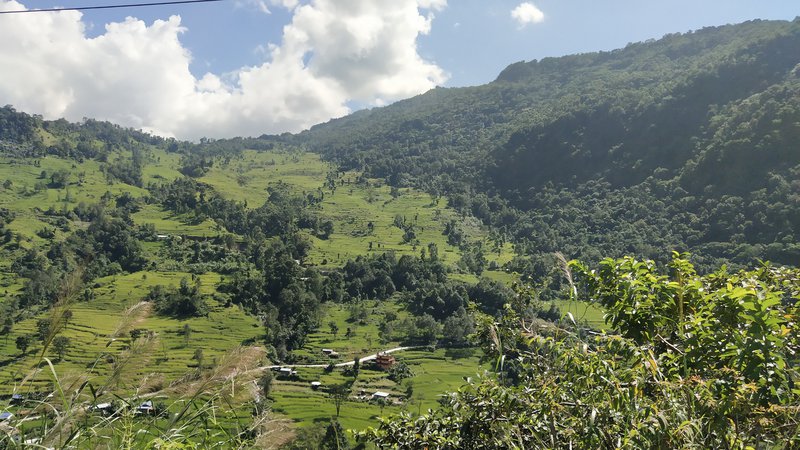
Kali Gandaki Corridor
The hermitage also has landmarks of Sita’s ‘Falahar’ (eating place), the Meditation place of the great Sage Valmiki, the place where the Ashwamedh horse was tied, Amrit (nectar of immortality) Kuan (well); Vishnu Chakra (disc), and the Hawan (Yagna) Kund (sacred square structure to perform fire rituals).
Everything has moved on – the history of time, the demographic changes, and social ecosystems. But in this journey of thousand years, something remained engraved in the hearts of the people – the tradition to follow rituals. Still, everything is on sale here…animals as well as human sentiments.
As the court is hearing the petition of Kali Gandaki river in near future against the construction of the dam for the Kali-Gandaki Tinau river diversion project, petitioner Prakash Mani Sharma seriously takes the argument presented in the stakeholders meeting to work to declare Kali Gandaki as a Wrold Heritage site.
One has to wait for Supreme Court’s full verdict on how the idea floated by senior advocate Sharma linking the Mukti Chhetra with Harihar Chhetra practically materializes.
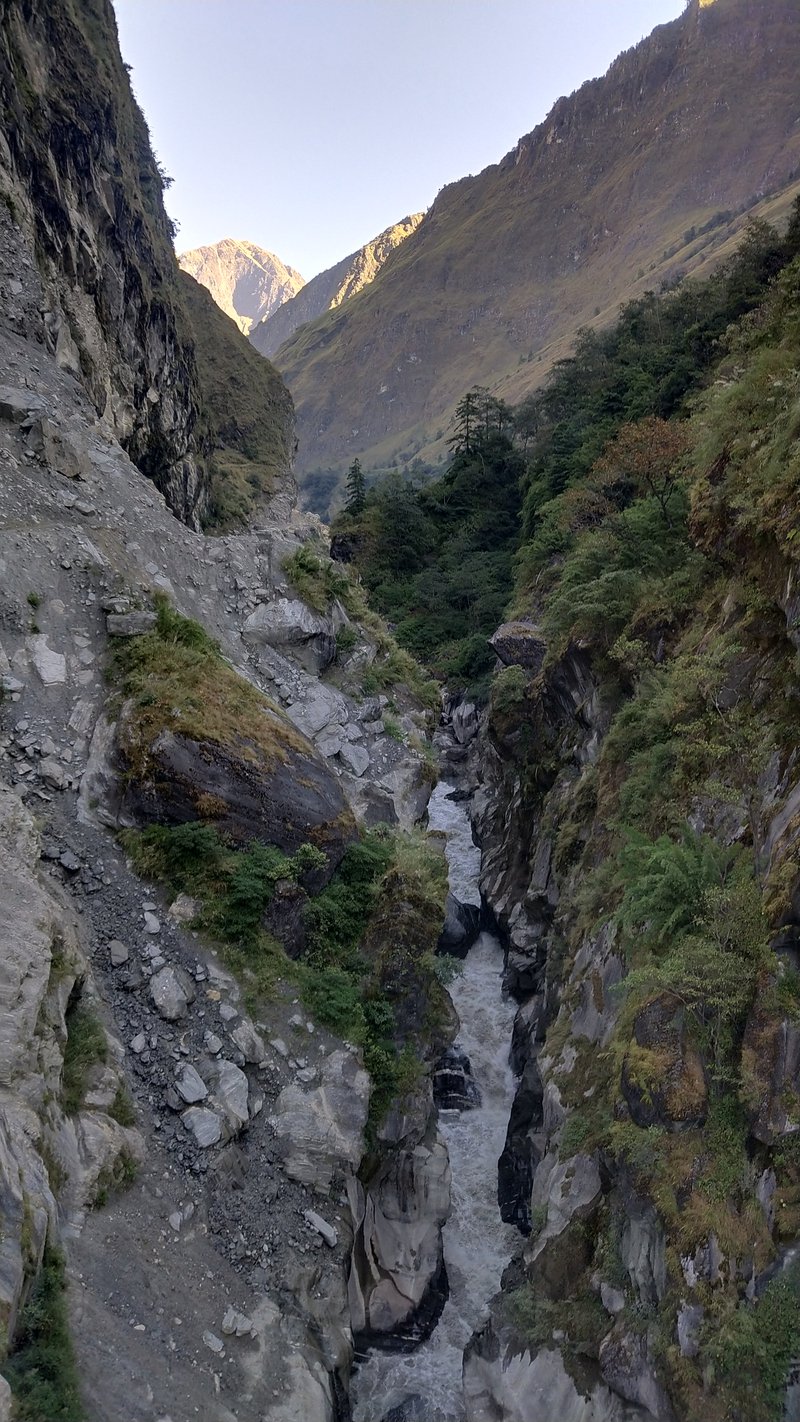
Kali Gandaki George
Reporting from Muktinath, Jomsom, Baglung, Jaitun, Ridi, Rampur, Pokhara and Debghabt
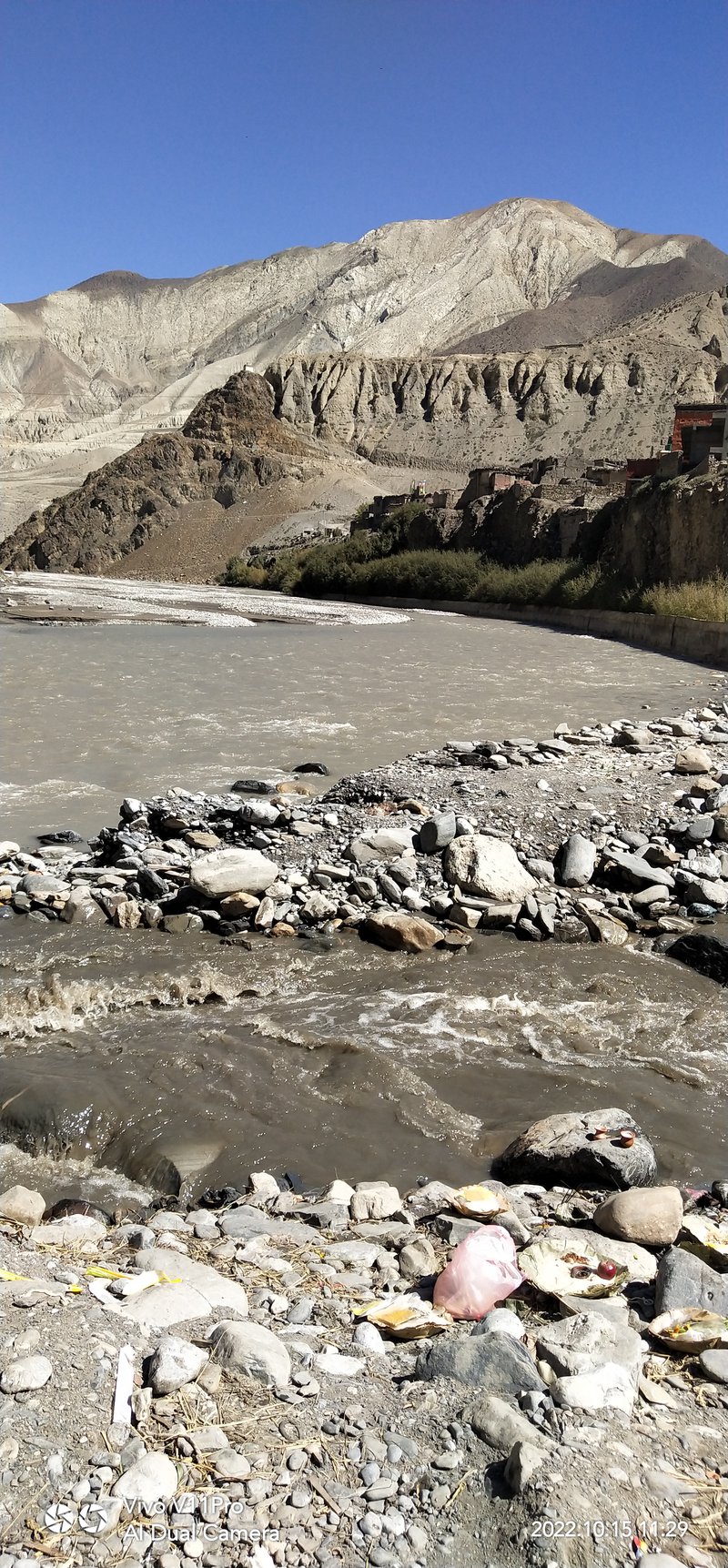
Kali Gandaki River
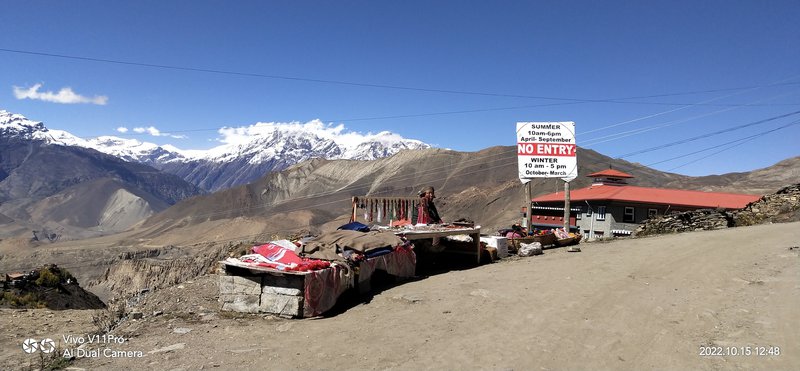

Keshab Poudel
Poudel is the editor of New Spotlight Magazine.
- HELVETAS NEPAL’S RIVERBED FARMING: Shift From Overseas To Local Farming
- Jul 26, 2024
- POLITICAL SCENARIO : K.P. Sharma Oli's Resurgence
- Jul 21, 2024
- UNDP/MinErgy: An Inventive Approach To Clean Brick Kiln
- Jul 19, 2024
- HELVETAS NEPAL: Nutrition Through Riverbed Farming
- Jul 18, 2024
- NOU Opens To All: Dr. Shilu Manandhar Bajracharya, Vice Chancellor
- Jul 15, 2024






